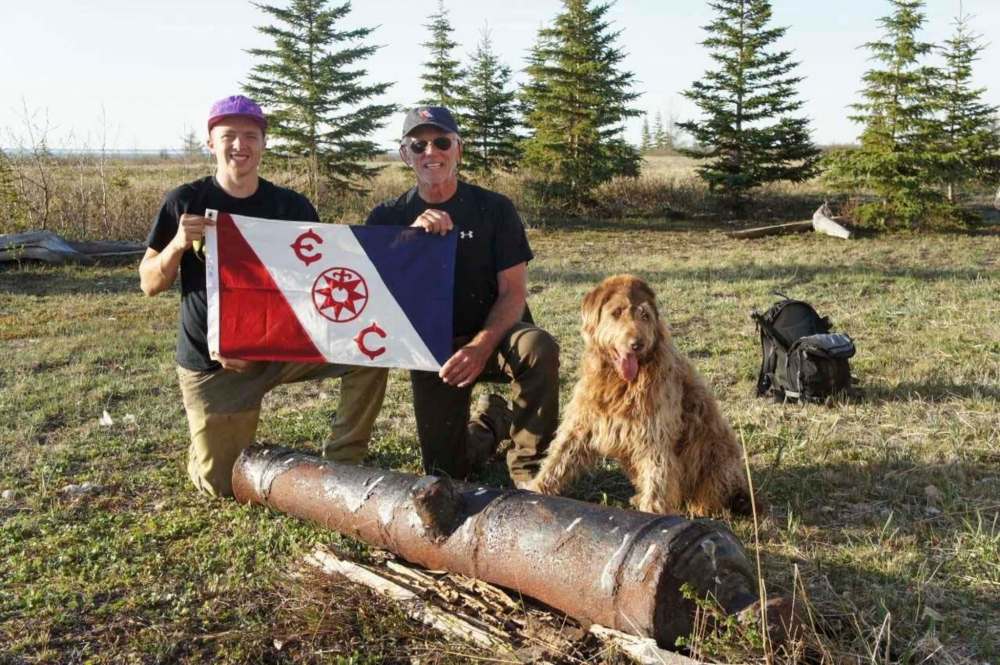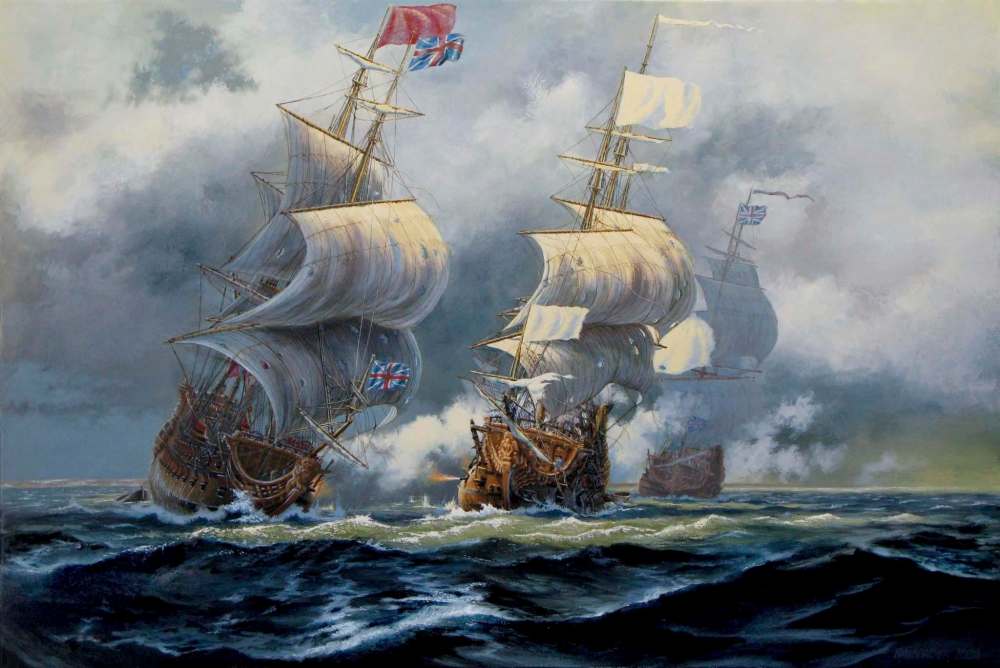Uncharted waters
Navy ship sunk off coast of Hudson Bay 320 years ago -- two men are on a quest to find it
Advertisement
Read this article for free:
or
Already have an account? Log in here »
To continue reading, please subscribe:
Monthly Digital Subscription
$1 per week for 24 weeks*
- Enjoy unlimited reading on winnipegfreepress.com
- Read the E-Edition, our digital replica newspaper
- Access News Break, our award-winning app
- Play interactive puzzles
*Billed as $4.00 plus GST every four weeks. After 24 weeks, price increases to the regular rate of $19.00 plus GST every four weeks. Offer available to new and qualified returning subscribers only. Cancel any time.
Monthly Digital Subscription
$4.75/week*
- Enjoy unlimited reading on winnipegfreepress.com
- Read the E-Edition, our digital replica newspaper
- Access News Break, our award-winning app
- Play interactive puzzles
*Billed as $19 plus GST every four weeks. Cancel any time.
To continue reading, please subscribe:
Add Free Press access to your Brandon Sun subscription for only an additional
$1 for the first 4 weeks*
*Your next subscription payment will increase by $1.00 and you will be charged $16.99 plus GST for four weeks. After four weeks, your payment will increase to $23.99 plus GST every four weeks.
Read unlimited articles for free today:
or
Already have an account? Log in here »
Hey there, time traveller!
This article was published 15/06/2017 (3049 days ago), so information in it may no longer be current.
We’re all searching for something.
The ideal partner, maybe. A dream we hope will come true. Perhaps a purpose to be passionate about.
Johann Sigurdson and David Collette — a pair of Manitoba-born, Viking-inspired explorers of Icelandic descent — have already found their passion and purpose. But they’re still trying to find the ideal government partner for their dream adventure. For almost four years, Sigurdson, 66, and his nephew Collette, 50, have been trying to mount an expedition to locate the 320-year-old remains of the HMS Hampshire, a British Royal Navy man-of-war sunk, with all hands aboard, off the northern coast of present-day Manitoba, of all places.

In the late-17th century, the Hudson Bay Coast — and particularly York Factory, the strategically situated fur-trading post at the mouth of the Hayes River — was prized property during what was known in Europe as King William’s War.
“Except for the French moving into the St. Lawrence,” Collette explained, “it (Hudson Bay) was the entrance to the continent.”
What became known as the Battle of Hudson Bay happened almost inadvertently in early September 1697. It was brief, less than three hours, but it was a bloody high-seas-style exchange of cannon fire between three allied ships — the Hampshire and a pair of armed Hudson Bay Company freighters — and the Pelican, a lone French warship that had become separated in fog from the fleet it was leading on a mission to capture York Factory.
Outgunned 118 to 44 by the British boats, what ensued for the victorious French ship has been called “the greatest Arctic sea battle in North American history” by author Peter C. Newman. Only one of the ships — the HBC’s Dering — would survive intact, by fleeing to safety.
You’re pardoned if you haven’t heard much, if anything, about this epic encounter. Neither had Sigurdson or Collette when they chanced upon the rest of the story at the National Historic Site of York Factory. This was while planning a mission of discovery of another kind — sailing from Churchill to Iceland in search of potential Viking landing sites in the Arctic and perhaps 500 years of undiscovered pre-Columbian contact.
They began that in the summer of 2013, with a practice excursion from Gilliam along the Hayes River to York Factory, where they discovered the detailed story and abandoned the trip back to Iceland.
Actually, Sigurdson had heard tales of the battle during his time travelling the Hudson Bay coast as a natural resources biologist. But when he and Collette heard the detail, they were almost as blown away as the Hampshire had been.
“Then we started realizing this incredible Canadian event in 1697,” as Collette put it.
“And oh, by the way, there’s a 118-foot Royal Navy frigate that got sunk with all hands… that has never been found.”
The story also has a supporting cast of colourful and historically important characters perfect for a Hollywood movie. Or, better yet, a Canadian film.
The 36-year-old captain of the Pelican and commander of the French fleet was Pierre Le Moyne d’Iberville, a Montreal-born soldier, explorer, privateer, trader and colonial administrator who extended his North American duties for France as far as present day Louisiana.
Then there was Henry Kelsey. The HBC employee was about 30 when he negotiated the surrender of York Factory to d’Iberville days after the battle. Kelsey would become better known for being the first European known to have trekked into what is now Saskatchewan, the Canadian plains beyond and to have seen buffalo.
Collette knew nothing about either man when he initially arrived at York Factory.
But as an explorer, what he did know was the location of the Sir John Franklin Northwest Passage expedition to the Canadian Arctic — which had been a mystery since Franklin and his crew vanished in 1847 — was a much higher historic priority than the Hampshire.
“Over the last couple of years, we’ve watched the Canadian government go after the Franklin ships up in the Arctic,” Collette said. “And it’s been a great story. But 15 miles off the shore of Manitoba is this historical ship that no one’s looked for. And no one seems to care about.”

Except Sigurdson and Collette.
The pair have their own website dedicated to their Fara Heim Foundation that mentions the hoped-for Hampshire expedition. Both are fellows of the Royal Canadian Geographical Society. And fellows of the Explorers Club, the New York-based organization that claims illustrious members with famous firsts — first to the North Pole, the South Pole and first to the summit of Mount Everest. Even first to the moon.
As for Sigurdson and Collette, they have developed a three-phase plan to locate the Hampshire. It would start from the air and, they hope, finish with filming and archeological work on the bottom of Hudson Bay.
But four years after they decided to look for the Hampshire, they’re still trying to find out which government agency is responsible for issuing what they need to start — a search permit.
This week, I emailed an inquiry to Parks Canada. A spokesperson replied Wednesday, saying Parks Canada does not manage Hudson Bay.
“Therefore the agency would not be responsible for issuing the permit required to conduct the search or aerial surveys.”
But the spokesperson added this: “While Parks Canada is the federal authority for archaeology, including underwater archaeology, it is not the federal lead for shipwrecks in Canada.”
Transport Canada is, she said.
Really? Collette said when they went to the Transport Canada website and looked under archaeological and military wrecks, there was a different message.
“It basically says, ‘Call Parks Canada.’ So we did!”
Two explorers trying to navigate a federal bureaucracy in search of a simple search permit — and a ship that sunk more than 300 years ago. One is left to wonder what a Viking would do next.
gordon.sinclair@freepress.mb.ca


